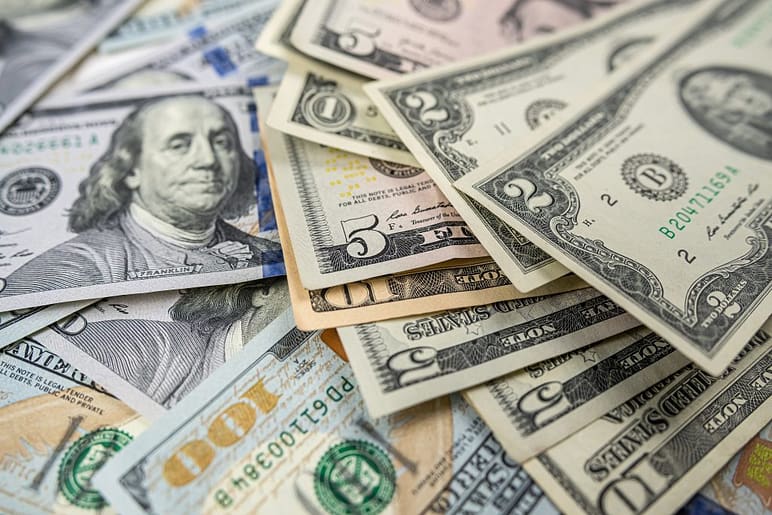
Getty Images
Dear Eartha, I heard that where I bank can have an impact on climate change. How can I make sure my money isn’t hurting the planet?
When people think of their carbon footprints, money likely isn’t one of the first things to come to mind. But just like your daily commute, your diet or the energy efficiency of your home, where and how you bank can have a big impact on your carbon footprint. That’s why choosing a bank that prioritizes sustainability can make a meaningful difference. The good news? Making the switch to a greener bank is simpler than you might think.
How banks drive climate change
So, how does the money in your bank account affect the environment? Well, banks use deposits to fund projects and invest in companies. Extracting and processing oil and gas is a costly endeavor, so fossil fuel companies rely on large financial institutions to help fund their projects. Banks play a key role in this by providing loans, investments and insurance to these companies. Since the Paris Climate Agreement was signed in 2016, banks have funneled almost $7 trillon to fossil fuel companies, ultimately driving up carbon emissions and worsening the climate crisis. In fact, if these large banks were a country, the greenhouse gas emissions their investments enable would make them the third largest emitting country in the world – behind only China and the United States.
Big names like Chase, Citibank, Wells Fargo and Bank of America rank among the top funders of these projects. This means that if you bank with one of these institutions, your deposits could be used to support oil and gas projects. What exactly is the impact of your money? According to research by Topo Finance — a nonprofit dedicated to helping businesses and individuals leverage their money to drive social and environmental progress — moving $8,000 from a “carbon-intensive” bank to a “carbon-responsible” bank would save more greenhouse gas emissions than adopting an all-vegan diet.
How to make the switch to greener banking
Moving your money is an important action you can take to shift financial capital away from the oil and gas industry. And fortunately, switching to a greener bank is easier than it might sound. Today, there are plenty of secure banking options that prioritize sustainability. With a bit of research and a few simple steps, you can make the transition in an afternoon.
- Research your current bank. Start by looking into your bank’s involvement with the oil and gas industry. Topo Finance has a list of the 11 most carbon-intensive financial institutions in the U.S. Other resources, like the Banking on Climate Chaos report and BankTrack, can provide insight into where your bank stands on fossil fuel funding. Fortunately, not all banks are massive funders of oil and gas. Many local banks uphold strong environmental standards. For instance, local banks like Alpine Bank and 1stBank release annual environmental reports, highlighting their impacts and setting new sustainability goals ensuring their customers have transparency on their institution.
- Explore green banking options. If you find your current bank falls short, there are several banks and credit unions committed to financing renewable energy and sustainable projects. Tools like bank.green and the Global Alliance for Banking on Values can help you compare different green banks and find one that aligns with your needs. Many of these options offer competitive services, online banking, and ATM access, making them as convenient as traditional banks.
- Check your investment accounts. Moving your checking and savings accounts is important, but don’t overlook your investment accounts, especially retirement funds. Many general retirement accounts are tied to fossil fuel investments. Fortunately, there are sustainability-focused index and mutual funds that help grow your money without financing oil and gas. If a financial advisor manages your accounts, simply ask them to help you shift to fossil-free investments.
- Make the transition. Once you’ve chosen a green bank, set aside an afternoon to open your new account and transfer your money. This involves updating any direct deposits or automatic payments, which most banks make easy with online forms.
The power of climate-friendly banking
Switching to climate-conscious banking and investments is a powerful way to align your finances with your environmental values. By choosing banks and funds that prioritize sustainability, you’re not only shrinking your carbon footprint but also sending a message to the financial industry that climate action matters. Every dollar counts in the push toward a cleaner, greener economy. Start by researching your bank, exploring eco-conscious alternatives, and making the change — because when it comes to the climate, even small financial choices can add up to big change
Ask Eartha Steward is written by the staff at High Country Conservation Center, a nonprofit dedicated to waste reduction and resource conservation. Submit questions to Eartha at info@highcountryconservation.org.


